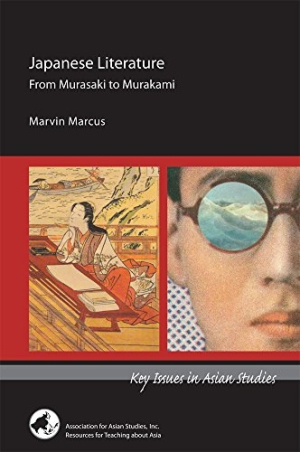Japanese Literature
From Murasaki to Murakami
Marcus offers sundry lessons and incites a new appreciation for Japan’s culture, history, and literature.
“Compared with its ubiquitous commercial products,” Marvin Marcus writes, “the literature of Japan is little known”—thus the impetus for Japanese Literature: From Murasaki to Murakami. In only 132 pages, Marcus packs manifold cultural, historical, and literary lessons. With simple, straightforward prose, he showcases the diversity of form and content.
In the introduction, Marcus writes, “Japan may be a study in contrasts—the frenetic, postmodern cities and popular cultures icons on the one hand, and the transcendent ethereal domains of tea ceremony and Zen meditation on the other.” He grounds each literary tradition with historical precedence. A place’s events, traditions, and texts are inextricable, he claims, explaining the influence of Confucianism and Buddhism, and he even doles out a language lesson: “The Chinese roots of this civilization were honored by Japanese elites,” he says, and then proceeds to break down the kanji, or the Japanese syllable system.
Marcus is interested in the branches of literature, how one form leads to another and how they might eventually echo or connect back to earlier forms. Sometimes, form emerges from the political structure. During the imperial rule of the 700s, the Kojiki, which was “the Japanese version of the biblical Genesis,” was written. Early Japanese writers had a penchant for creating tightly structured poetry; they honored the craft alongside religious tradition. Ninth-century Kyoto poets gravitated toward the waka, a thirty-one syllable poem “that would become a way of life—a michi.”
Marcus compresses whole periods, sometimes covering hundreds of years within one paragraph. These moments are well chosen and rarely, if ever, warrant skimming. When describing the renga composition, Marcus says, “Its fusion of poetic cultivation, intuitive interaction … and mastery of complex rules and techniques calls to mind jazz improvisation at a virtuoso level of group performance.”
The editor’s introduction predicts that Japanese Literature “will successfully introduce students and instructors in undergraduate survey and honors high school literature courses to one of Asia’s greatest literary traditions.” Even those far beyond said institutions will find plenty to contemplate.
Reviewed by
Josh Cook
Disclosure: This article is not an endorsement, but a review. The publisher of this book provided free copies of the book to have their book reviewed by a professional reviewer. No fee was paid by the publisher for this review. Foreword Reviews only recommends books that we love. Foreword Magazine, Inc. is disclosing this in accordance with the Federal Trade Commission’s 16 CFR, Part 255.

